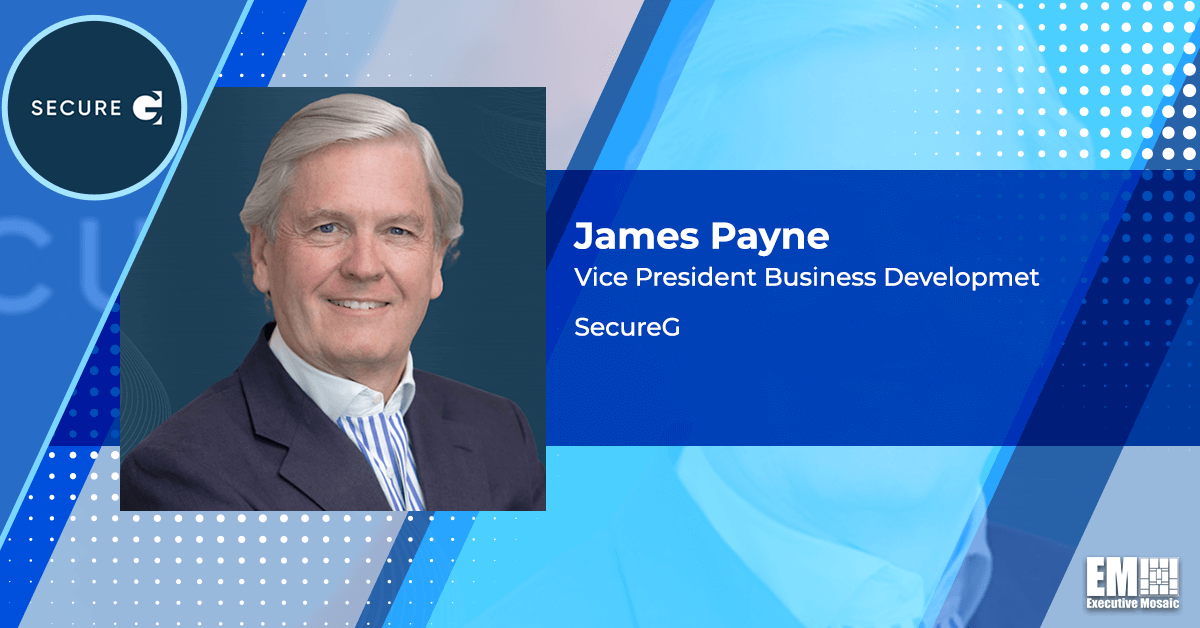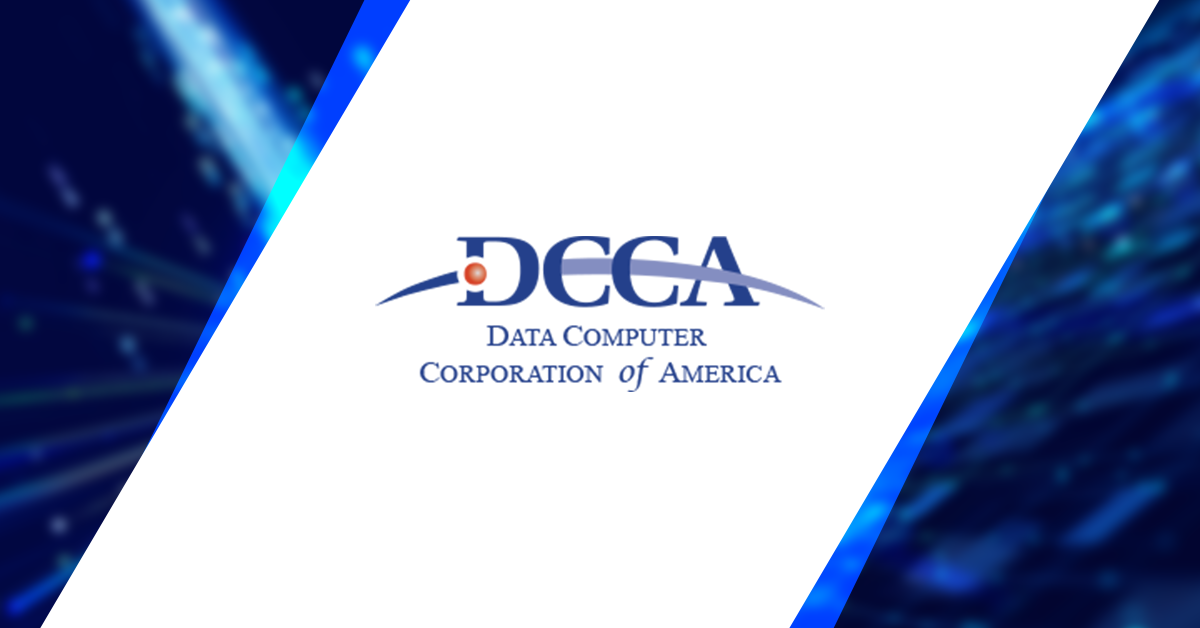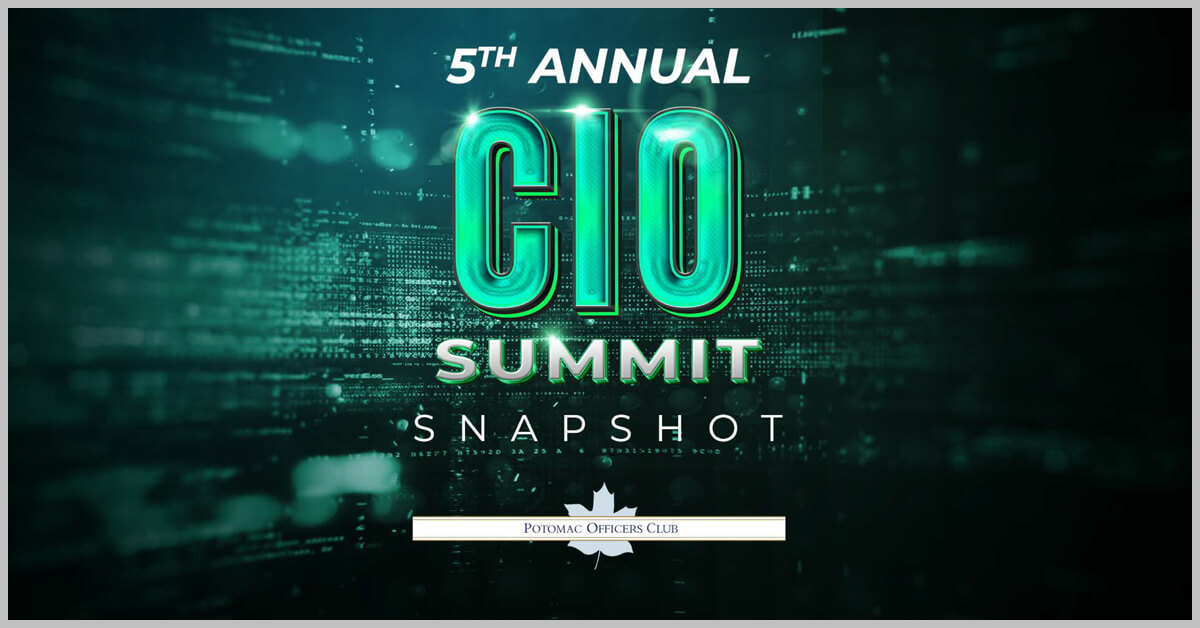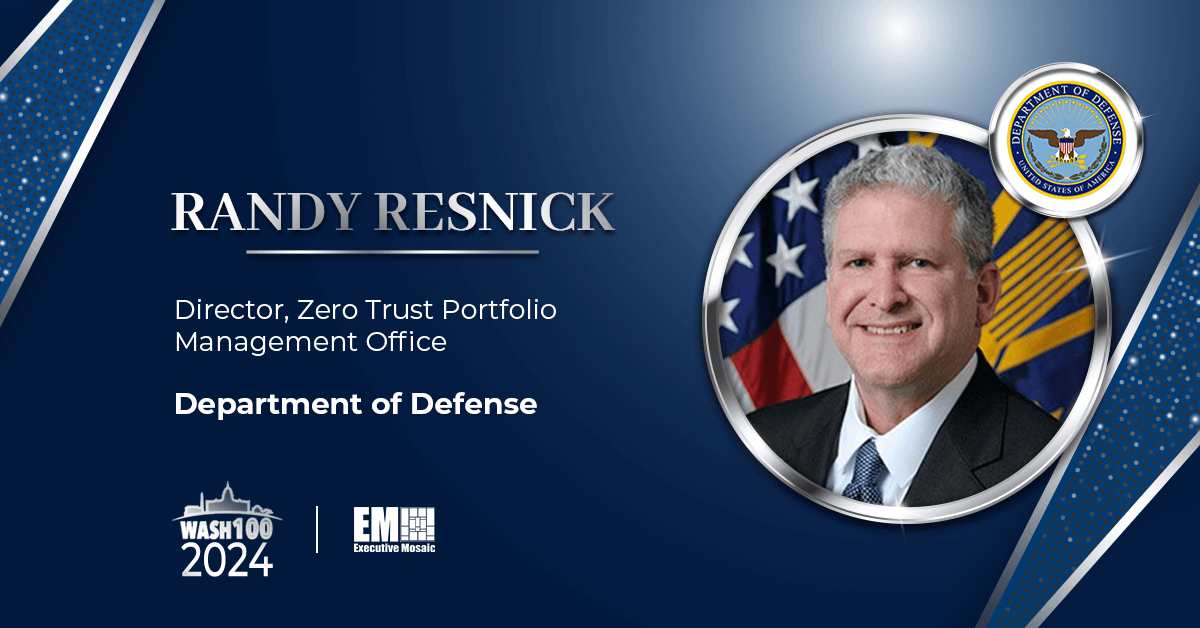James F.X. Payne has spent his career making efforts to enhance homeland security. With stints at companies such as Bechtel and Dun & Bradstreet, the Washington, D.C.-based executive has worked consistently with U.S. Intelligence Community clients to develop strategies to prevent incursions on intellectual property and infrastructure. He additionally holds experience in the public sector-facing telecommunications business, with time spent at Sprint Government Solutions and the former Qwest Communications, where he established a pipeline to the federal government and grew revenue by 500 percent.
Payne’s latest venture is SecureG, a company that offers what the executive believes is a unique approach to helping private and public organizations alike align their strategies with the zero trust architecture mandates of the Biden Administration’s May 2021 executive order. He joined the company as vice president of business development in February.
He recently spoke with GovCon Wire for an Executive Spotlight interview. In the conversation, he discusses the centrality of a zero trust framework in today’s cyber environment, what SecureG can provide businesses and the philosophies that have shaped and prepared him for his new position.
- Why do you see zero trust implementation as important to the future of data security?
Zero trust architecture as defined by the U.S. Office of Management and Budget, the Department of Defense and the Department of Homeland Security’s Cybersecurity and Infrastructure Security Agency offers a guiding set of principles that will ultimately protect the Homeland from malicious attacks on our 16 critical infrastructure sectors. However, there can be no zero trust unless you can definitively verify the identity of all network components. And therefore [SecureG’s] wheelhouse, our reason to exist is to do that validation and use what is called an enhanced PKI to identify possible harmful elements. For example if there is something suspicious on the network SecureG solutions can identify that issue and isolate that harmful component. That is the mission of SecureG.
- What makes SecureG stand out in the cybersecurity field and what is its specific answer to ZTA implementation needs?
It is repeatedly stated that you cannot have ZTA without continuous cross-checking of network elements. SecureG uniquely validates the moving parts of a network to identify if there is an enemy within. Unlike traditional PKI, this must be done in near real-time. SecureG identifies possible malicious components on your network allowing you to evolve to true ZTA. This continuous monitoring is an essential building block of zero trust architecture. As we rapidly move to Internet-of-Things with billions of machine-to-machine communications this verification process is vital.
- I see you worked closely with Intelligence Community customers in your roles at pExchange and Dun & Bradstreet. Is this a client base you’ll continue to focus on at SecureG? Will you also be working with private sector clientele?
The need for ZTA is not unique to the government or the IC. ZTA has become an essential philosophy mandated by OMB but equally important to the private sector. I have made a life-long commitment to the Intelligence Community and carry certain obligations for the rest of my life. Agencies such as DOD, NSA and DHS CISA are pressing private sector companies to advance national security with new and creative offerings. My interest in homeland security is what brought me to SecureG therefore working in this space and supporting the private sector companies that sell to the IC is equally important to me.
As for the private sector, the nature of all these technology breakthroughs, whether it’s ZTA or something else—perhaps quantum computing—everybody realizes that the private sector is not in opposition to the public sector. It’s a partnership. Technology breakthroughs can come from the government and they can come from the private sector. Most of my dialogue at SecureG is actually with the private sector who happen to sell to the public sector. So, it’s an important bridge between the two. In my career I’ve not chosen one or the other. I think most people see me as being exclusively in the public sector and government but it’s through many private sector companies. You have to learn to be fluent in both languages.
- You have had a long and accomplished career, touching on wide-ranging subjects often at the intersection of technology and government. How has your experience prepared you for your current role at SecureG?
I have been fortunate in my career to have been able to provide leadership through several dramatic shifts in the industry and helping the government to navigate through very important technology shifts starting with AT&T’s divestiture, the birth of the Internet and the emergence of critical wireless advances. We now face IOT, supply chain and quantum computing challenges. ZTA is as much a cultural pivot as a technology shift. I think we all know at times the answer the client wants, but you have to, at some point in your career, decide, if something is important enough, if you want to speak the truth…which may not be what the client wants to hear and may not be what the boss wants to hear. My role is to speak the truth and, and then open up the aperture to the client and the company or what the choices are and the options are in front of us. My accomplishments in the past have prepared me well for SecureG. ZTA is a dramatic push back to our enemies that have infiltrated our most critical networks. I relish the opportunity to help the government implement real change in this space and see my role at SecureG as part of this career continuum.
- What is the accomplishment you’re most proud of in your career?
I am proud of the opportunities I had during my role in the National Security Telecommunications Advisory Committee (NSTAC) during 9/11. My company served as the NSTAC chair during those very dark times yet I saw natural competitors and unlikely partners come to the aid of the homeland. I am very proud of that work and hope to continue that role in the future.






